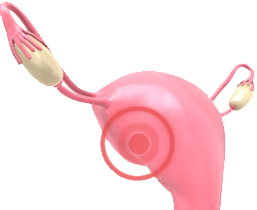Laparoscopic surgery is a surgical technique, when a telescopic rod lens, connectable to a video camera for observing the abdominal cavity, is inserted through 5mm~10mm trocar
to confirm lesions on TV monitor after injecting carbon dioxide into the abdomen and operations are performed through other 2 small incisions on the lower abdomen. There is also a single-port laparoscopy, which requires only a single small incision of 1~1.5cm.
Laparascopic surgery also called pelviscopic surgery and even the laser laparascopic surgery, because sometimes it uses the laser cautery. And there is a hysteroscopic surgery, in which operations are performed in uterus by inserting camera and surgical instruments through vagina, when lesions ate located in uterus.
This laparascopic surgery is rapidly developing especially in the gynecology field and now it is introduced in the surgeries of gynecology such as treatments of ectopic pregnancy and endometriosis, ovarian tumor extirpation tubal replantation, myomectomy, hysterectomy and gynecological malignancy extirpation.
It is also used at the infertility clinic to investigate the causes of and to treat infertility.
CWH is performing all the mentioned surgeries with the state-of-the-art medical instruments of laparascopy and hysteroscopy.
 | Advantages of Laparascopic Surgery - Less pain. A lot less pain versus an open procedure.
- Less chance of side effects such as infection.
Reduced exposure of internal organs to possible contamination thereby reduced risk of acquiring infections. - Less hospital stay. Early discharge versus an open procedure.
- Short recovery time. Normally an immediate return to everyday living after discharge is possible.
- Less post-operative scarring. Smaller incision reduces size of scar resulting better aesthetic effect.
- More delicate operation is possible by securing expanded clear surgical view. Patients can be treated more delicately and accurately.
|
Disadvantages of Laparascopic Surgery
- Laparascopic surgery is clearly advantageous versus an open procedure.
- However, the surgery will be impossible by failure of securing clear view when adhesions of small intestine or large intestine are severe and serious. In this case, an open procedure is unavoidable.
It doesn't mean that laparascopic surgery is always impossible when there is an adhesion.
It depends on the degree of adhesion.
 | CWH can perform laparascopic and hysteroscopic surgeries, incliding - Hysterectomy
- Myomectomy
- Myolisis
- Ovarian cystectomy or Oophorectomy
- eg, salpingectomy, salpingostomy
- Diagnosis and treatment of endometriosis
- Hysteroscopic polypectomy
- Tubal ligation
- Appendectomy
|



